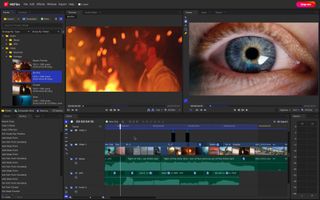Blitz News Digest
Stay updated with the latest trends and insights.
Edit Like a Pro: Transform Your Photos with These Tricks
Unlock pro-level photo editing skills! Discover game-changing tricks to elevate your images and impress everyone. Start transforming your photos today!
Top 10 Editing Tools Every Photographer Should Know
Editing is an essential part of a photographer's workflow, and having the right tools can significantly enhance the quality of your images. In this article, we will explore the Top 10 Editing Tools Every Photographer Should Know. From professional software to user-friendly applications, these tools cater to various skill levels and offer a range of features that can bring your photos to the next level.
1. Adobe Lightroom - This is a favorite among photographers for its robust editing capabilities and intuitive interface.
2. Adobe Photoshop - Known for its extensive feature set, Photoshop allows for advanced edits and manipulations.
3. Capture One - Preferred by many professional photographers for its powerful color grading tools.
4. Affinity Photo - A budget-friendly alternative to Photoshop with a solid set of features.
5. GIMP - A free, open-source editor that provides many of Photoshop's capabilities.
6. Canva - Great for creating graphics and simpler edits.
7. Skylum Luminar - Offers AI-powered features that simplify complex edits.
8. Photoscape - A user-friendly option for basic editing and collages.
9. Fotor - An online editor with filters and effects.
10. Darktable - A powerful open-source tool that allows photographers to process RAW files.

5 Simple Tricks to Enhance Your Photos Instantly
Enhancing your photos doesn't always require advanced editing skills or expensive software. With just a few simple tricks, you can instantly elevate the quality of your images. Here are 5 simple tricks to get you started:
- Adjust the Brightness and Contrast: Brightness and contrast adjustments can make your photos look more vibrant. Use editing tools to increase the brightness without washing out detail, and tweak the contrast to add depth to your images.
- Crop for Composition: A well-composed image is more appealing. Utilize the rule of thirds by cropping your photo to place the focal point off-center, leading to a more dynamic composition.
3. Use Filters Sparingly: Filters can enhance colors and create mood, but too much can ruin an otherwise great photo. Choose a filter that complements your photo's natural hues without overwhelming it. 4. Sharpen the Image: A slight sharpening can make a photo pop, enhancing details without creating too much noise. Just be careful not to overdo it—subtlety is key!
5. Experiment with Textures: Adding texture to your photos can create visual interest and depth. Consider overlaying subtle textures or using editing apps that offer texture options to give your photos that extra flair.
How to Edit Photos Like a Professional: Tips and Techniques
Editing photos like a professional requires a combination of technical skills and a keen eye for detail. Start by choosing the right photo editing software, such as Adobe Photoshop or Lightroom, which offers powerful tools for enhancing images. Understand the fundamentals of photo editing, including adjusting exposure, contrast, and color balance. Familiarize yourself with various editing techniques like cropping, sharpening, and noise reduction to bring out the best in your images.
Another key aspect of professional photo editing is knowing how to use layers and masks effectively. Layers allow you to edit specific parts of your image without affecting the entire photo, while masks help in blending adjustments seamlessly. Additionally, stay organized by naming your layers and grouping them logically. As you develop your editing style, don’t hesitate to experiment with different filters and presets, but always aim for a natural look that enhances your photography rather than overpowering it.